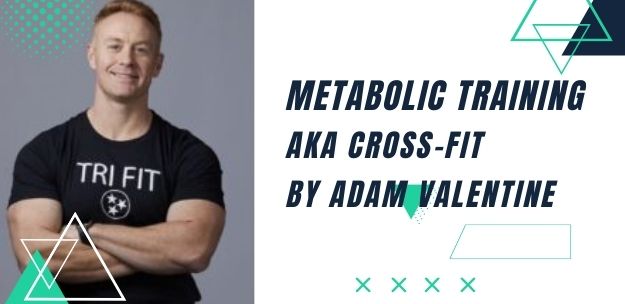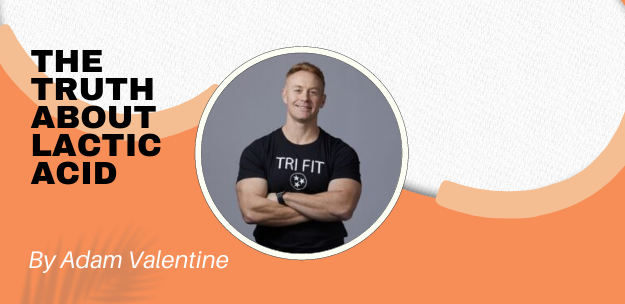
Metabolic Training AKA Cross-fit
Metabolic Training AKA Cross-fit By Adam Valentine “The latest and greatest” The time has come folks, and a new fitness regime has risen. It’s

Forums all over the map have evolved over the years. Many “theorists” will attempt at proving why something is the way it is. I see this frequently with “experienced” trainers as they hand out wrong advice like its candy. Majority if the cases, people simply regurgitate information they got from another idiot and dismiss its credible source. Today, that is all going to change. I’m going to set the record straight with one of these physiologic myths: What is lactic acid and how is it associated with training?
Over the span of my four years obtaining a degree in exercise science, I’ve encountered a lot of topics. Lactic acid (LA) is a rare topic to most exercise physiologists, but a very important one to the starving gym rat who thrives on innovative training styles and the results stemming from it. Simply put, lactic acid is a by-product. It can get a little wordy, so let’s keep it as simple as possible. The body stores glucose (carbohydrates) as glycogen. Glucose is used in any form of activity to produce muscle contractions (ATP). If stored in the muscle, we use this 1st in accordance with the ATP-PC (Creatine Phosphate) system (1st 5-8 seconds of exercise). In other words, glucose that’s stored in the muscle is our 1st line of fuel. Once we move past this phase and keep exercising (contracting), our body switches to a new system of fuel called anaerobic metabolism. This system utilizes glucose as well, generally taken from its storage from the liver. As we continue to exercise, glycogen utilization requires oxygen to be dumped into the muscle tissue in order to keep contracting. If no oxygen is available, we see the production of lactic acid. LA is a fate we encounter if we are strictly in an anaerobic state of exercise (non-stop activity without rest). Once LA forms, our body becomes more acidic, which is why a “burning sensation consumes the muscle region being worked. This will only increase if exercise does not stop (ex. A 200 meter sprint will cause lactate buildup in the lower limbs, eventually resulting in muscle fatigue).
Why does high intensity exercise produce more LA?
Many reasons for this are associated with this type of training. First, remember that the muscles need oxygenated blood to produce ATP for contractions, and if this blood doesn’t have time to go to the liver, it will simply accumulate more lactic acid. The liver is our savior in this predicament because it serves a buffer; the liver will remove lactate from the blood if exercise is reduced, thus, putting an end to the “burning sensation.” Once buffering occurs and exercise is stopped, lactate will be removed within 30 minutes. Many hypothesis from these “certified trainers” will assume lactate stays in the blood for days, causing muscle soreness (DOMS). Unfortunately, this is not the case. Muscles become sore from fiber trauma and damage through training, no matter the lactate buildup. Think of it like this, if you were lifting heavy and long enough to accumulate a high amount of LA, wouldn’t that mean that the muscle is being pushed to its limit anyway? This tremendous stress you’ve placed on the muscle is what’s causing soreness, not lactic acid buildup. Secondly, the recruitment of fast-twitch muscle fibers (explosive fibers) are also predictors of higher levels of lactate formed. The body recruits these muscles to maintain high frequency in contractions, and this causes LA formation to sky rocket. Also, hormone levels are increased with higher intensities (ex. catecholamines), which stimulate the breakdown of glycogen. This breakdown will produce pyruvic acid to be converted to lactic acid eventually if no oxygen is present.
Is LA good or Bad?
Buildup of lactate acid is nothing more than indicator that your body is being deprived of oxygen. The only real bad thing associated with it is the enormous amount of pain felt as you rip out those last few bicep curls before screaming. Notice if you take a 2-3 second pause in between reps, the pain that was once unbearable has somewhat diminished. This is largely due to O₂ binding to hemoglobin and decreasing the bodies pH level (decrease acidity). If no binding takes place, there will be a limit to performance. As muscles become filled with lactate, they fatigue much faster, thus, reducing the force production rate. This is generally when we reach maximal failure.
There are a few opinions out there which attribute lactate with stimulated growth hormone (GH) release. In the infamous “Katsu” training, a blood pressure cuff is placed on the exercising muscle in order to block the incoming oxygenated blood. This forces a massive buildup of LA, supposedly causing an influx of glucose followed by oxygen rich blood. This is believed to have major influence on HGH release. In relation, other training styles such as “German Body Composition”, the same principle is applied except sets are back to back with less than 30 seconds rest. The outcome will leave your muscles full of LA, causing a massive pump. Regardless the type of training you prefer, LA is going to be a major part of lifting. Whether or not that releases more GH is up for scrutiny. In my opinion, growth hormone release is better seen in slower/ sedentary bouts (ex. Deep sleep). It would, however, make sense to have an increase in testosterone cells as a result of continuous muscle trauma, for this is the premise behind testosterone stimulation.
The Fate of Lactate Acid?
Lactic acid has a fate of its own. Ancient theorists used to believe that the majority of lactate was converted to glucose (over 80%). Old-school training incorporated many giant sets, sometimes 2x day, 5-6 days/week. This is a useful principle to those who enjoy skating the line of overtraining. Some believe this is good, which it is, as long as you’re doing it in the right condition (adequate rest and recovery in addition to a great pharmacy). If not, you are simply forcing the body to go too far and accumulate too much lactic acid, thus, depleting calcium uptake by the muscles (muscles need calcium to contract). The actual fate of lactic acid is: 70% is converted back to pyruvic acid (its original form used in anaerobic glycolysis), 20% converted to liver glycogen to aid in energy production, and the final 10% is converted to amino acids for protein utilization.
Trained athletes have less production of LA because their body has adapted to the vigorous training routine. Why does this happen? It is largely due to their ability to use AEROBIC glycolysis instead of ANAEROBIC. Remember that anaerobic refers to energy used without the presence of oxygen. In Aerobic, however, athletes can convert lactic acid to pyruvate and use it in the Krebs Cycle (I won’t even begin to try this topic). The point to remember is that beginners who exercise, rather its cardiovascular or high intensity lifting, will accumulate more lactic acid. There body has not adapted to the training style yet, therefore, less oxygen is distributed to tissues. Over time, blood distribution to and from the muscles will become more efficient.
It’s vital for trainers to understand the significance of LA and what is means rather than what you were told it means. Hopefully, this physiologic approach I have discussed won’t leave you guessing for more answers.

Metabolic Training AKA Cross-fit By Adam Valentine “The latest and greatest” The time has come folks, and a new fitness regime has risen. It’s

Caffeine: Bad or Good? It’s the most legal stimulant that’s easy to buy; Caffeine. We all have tried it and seen its remarkable effects. The

The Truth about Lactic Acid By: Adam Valentine Forums all over the map have evolved over the years. Many “theorists” will attempt at proving why
© 2025. All Rights Reserved
Murfreesboro Digital Marketing & Web Design - Boro Business Lab
